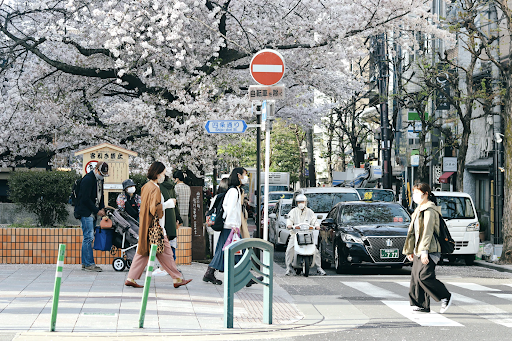When Is Cherry Blossom Season In Japan

Unsplash: Amy Tran
Spring in Japan is usually associated with nice, light-sweater weather and the blossoming of the pink and white sakura (cherry blossoms) all over the island country. During this festive season, which lasts for about three months from March to May, cherry blossoms start to blossom from the southernmost tip and up to the northern part of the country. So if you’re thinking of an adventure all over Japan during its flowering glory, perhaps plan a trip during its spring season!
Disclaimer: Most especially for people who frequently get seasonal allergies, don’t forget that there will be a lot of pollen in the air around this time of the year, so there will be lots of achooing and nose-blowing and itchiness of throat and more of those annoying common hay fever symptoms. Before this trip happens, you might want to organize your preventive measures and remedies before you begin to experience any symptoms of allergic reaction.
When is cherry blossom season
The cherry blossom season in Japan varies around different parts of the country and this is generally announced by the Japan Meteorological Agency. Usually, the blooming span of these beautiful pink flowers lasts for about two weeks. In some regions like in the subtropical Okinawan islands, cherry blossoms bloom around mid-January. In other southern cities, they bloom around late March. While in some colder areas up north, the flowers bloom sometime in early May.

Unsplash: Library of Congress
What is the ritual of Hanami
The tradition of enjoying the blooming of the lovely cherry blossoms in parks around Japan is called Hanami. Hanami (花見), which translates to "flower viewing," involves an outdoor gathering, picnic, entertainment, and activities underneath the cherry blossom trees among family, friends, loved ones, or colleagues. At some popular locations, the most desired spots are frequently reserved before the festival even starts. Other times, people leave a marked picnic sheet very early in the morning until the rest of the group arrives. However, it is important to remember that the practice of leaving an unattended picnic sheet throughout the day is not allowed in many parks.
For further official information and correct park policies, be sure to do careful research on the specific venue and learn about its local regulations on how to celebrate Hanami.
Proper Hanami etiquette
- Do not climb the trees
- Do not shake or pull on the branches
- Do not pick the cherry blossoms
- Do not walk or sit on the roots of the trees
- Do not leave garbage around, if possible dispose of the trash at home
Popular Hanami picnic foods:
- Hanami Dango: sweetened rice flour dumplings skewered together in sets of three, filled with red bean paste
- Takoyaki: ball shaped grilled octopus
- Karaage: Japanese fried chicken
- Hanami bento: with tamagoyaki (Japanese style-omelet), kamaboko (fish cake), inarizushi (sushi rice inside a fried tofu pouch), and makizushi (sushi rolls)
- Onigiri: rice balls and sometimes it is filled with salmon or tuna, pickled plum, and mayonnaise
- Sake: Japanese alcoholic beverage and is the regular hanami drink
- Chuhai: carbonated drink made with shochu and fruit juice


